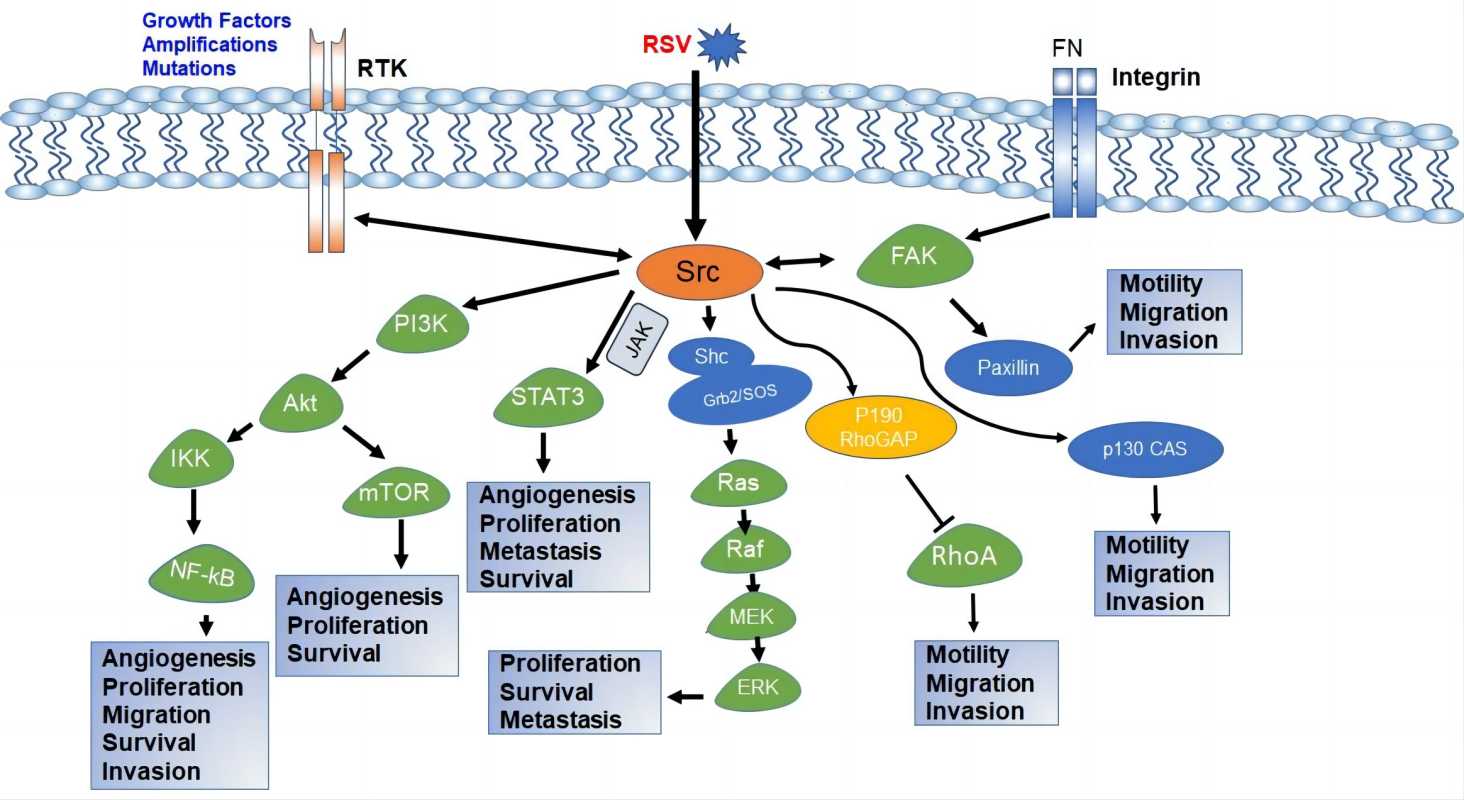Plasma cell disorders make up a broad spectrum of diseases that are characterized by the appearance of an abnormal clone of plasma cells, which typically manifests as a production of monoclonal immunoglobulin protein (monoclonal gammopathy).
Plasma cell dyscrasias are disorders of plasma cells that are produced due to abnormal proliferation of monoclonal population of plasma cells. This kind of immunosecretory disorder can lead to hematological malignancies such as cryoglobulinemia, heavy chain disease, plasma cell leukemia, multiple myeloma and so on. Recently, it was reported that enriched exosomal s-Src was found in serum microvesicles which were generated in malignant plasma cell dyscrasia. Since the activation of src cellular oncogene may be an early event in the pathogenesis of plasma cell dyscrasias and other various types of cancer, such as prostate cancer, the exosomal protein c-Src is found to be a promising biomarker for the diagnosis of plasma cell dyscrasias.
Exosomal c-Src Antibodies
Creative Biolabs is a world leading antibody manufacturing company with years of experience in the field of in vitro diagnostics (IVD). With our professional scientists, we are able to offer our clients a broad range of customized IVD antibodies to their specific requirements.
c-Src Biomarker
Proto-oncogene tyrosine-protein kinase Src, also known as c-Src, is a non-receptor tyrosine kinase protein encoded by the SRC gene in humans. c-Src, which encoded by a proto-oncogene, is made up of 6 functional regions: SH4 domain, unique region, SH3 domain, SH2 domain, catalytic domain, and short regulatory tail. Since the activation of c-Src promotes the survival, angiogenesis, proliferation and invasion pathways, it has been observed in about 50% of tumors from colon, liver, lung, breast and the pancreas with the underlying mechanism that genetic mutations will results in the increased activity or the overexpression of the c-Src leading to the constant activation of the c-Src.
 Fig.1 Illustration depicting the intracellular signaling cascade of Src and its regulation of diverse cellular functions.1
Fig.1 Illustration depicting the intracellular signaling cascade of Src and its regulation of diverse cellular functions.1
c-Src Antibodies
With dramatically increasing discovery of biomarkers, disease-related biomarkers are not a new phenomenon. With respect to diagnosis reagent, because of the specificity and unlimited availability of antibodies, they are broadly used in diagnosis of various diseases. In addition to plasma cell dyscrasias, the c-Src is overexpressed and activated in a large number of human malignancies and has been linked to the development of cancer and progression to distant metastases. Therefore, by detecting the exosomal c-Src proteins in serum, c-Src antibodies are preferable diagnosis reagents for plasma cell dyscrasias and other kinds of cancers, which can facilitate the characterization of these diseases. The experts from Creative Biolabs are committed to developing high-quality IVD antibodies for c-Src. We also provide other diagnostic antibodies which cover a full range of biomarkers for different kinds of diseases. Please feel free to contact us for more information and a detailed quote.
Reference
- Raji, Lukmon, Angelina Tetteh, and ARM Ruhul Amin. "Role of c-Src in carcinogenesis and drug resistance." Cancers 16.1 (2023): 32. Distributed under Open Access license CC BY 4.0, without modification.
For Research Use Only.

